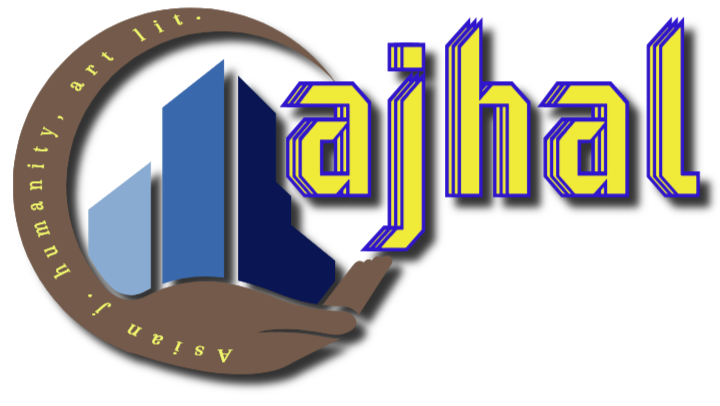Leveraging on Machine Moderation to Improve Content Organization
DOI:
https://doi.org/10.18034/ajhal.v5i2.552Keywords:
Machine moderation, Content management, Artificial intelligence, Hate SpeechAbstract
The growing pressure from the government on operators of different platforms on the needs to manage content in order to eliminate misinformation and ‘hate speech, this study examines the introduction of machine moderation mechanisms; surveys approximately the prevailing automated tools employed by key players in social media to manage rights violation, sabotage and hate speech; and recognizes major structures as the requirement for the implementation. We attempt to address the purpose of this paper by reviewing some selected pieces of literature. The article provides automated ‘hash matching and projecting artificial intelligence or machine learning devices. We also define machine moderation as a technological approach set up to demeanor content moderation at balance by foremost platforms for user-created content like YouTube, Facebook, and Twitter.
Downloads
References
Datar M, Immorlica N, and Indyk P. 2004. Locality sensitive hashing scheme based on p-stable distributions. In: Proceedings of the twentieth annual symposium on computational geometry, 2004, pp. 253–262. New York, NY: ACM.
Duarte N, Llanso E and Loup A. 2017. Mixed Messages? The Limits of Automated Social Media Content Analysis. Washington, DC: Center for Democracy & Technology. Available at: https://perma.cc/NC9B-HYKX
Facebook Newsroom (2016) Partnering to help curb spread of online terrorist content. Available at: https://perma.cc/V8DZ-AZZ7
Geiger, R.S. 2011.The lives of bots. In: Wikipedia: A Critical Reader. Amsterdam: Institute of Network Cultures.
Geiger, R.S. 2014. Bots, bespoke, code and the materiality of software platforms. Information, Communication & Society 17(3): 342–356.
Grimmelmann, J. 2015. The virtues of moderation. Yale Journal of Law & Technology 17: 42.
Holland A, Bavitz C and Hermes J. 2016. Intermediary liability in the United States. Berkman Centre for Internet & Society NOC Case Study Series. Available at: https://perma.cc/2QAY-UTDY
Kaplan AM and Haenlein M. 2010. Users of the world, unite! The challenges and opportunities of social media. Business Horizons 53(1): 59–68.
Klonick K. 2017. The new governors: the people rules, and processes governing online speech. Harvard Law Review 131: 1598–1670.
Lampe, C and Resnick, P. 2004. Slash (dot) and burn: Distributed moderation in a large online conversation space. In: Proceedings of the SIGCHI conference on Human factors in computing systems, 2004, pp. 543–550. New York, NY: ACM.
Mol A. 2008. The Logic of Care: Health and the Problem of Patient Choice. London: Routledge.
Movva, L., Kurra, C., Koteswara Rao, G., Battula, R. B., Sridhar, M., & Harish, P. (2012). Underwater Acoustic Sensor Networks: A Survey on MAC and Routing Protocols. International Journal of Computer Technology and Applications, 3(3).
Neogy, T. K., & Paruchuri, H. (2014). Machine Learning as a New Search Engine Interface: An Overview. Engineering International, 2(2), 103-112. https://doi.org/10.18034/ei.v2i2.539
Niu X and Jiao Y (2008) An overview of perceptual hashing. Acta Electronica Sinica 36(7): 1405–1411.
Paruchuri, H. (2015). Application of Artificial Neural Network to ANPR: An Overview. ABC Journal of Advanced Research, 4(2), 143-152. https://doi.org/10.18034/abcjar.v4i2.549
Paruchuri, H. (2017). Credit Card Fraud Detection using Machine Learning: A Systematic Literature Review. ABC Journal of Advanced Research, 6(2), 113-120. https://doi.org/10.18034/abcjar.v6i2.547
Roberts, S.T. 2016. Commercial content moderation: digital laborers’ dirty work. In: Noble SU and Tynes B (eds) The Intersectional Internet: Race, Sex, Class and Culture Online. New York: Peter Lang, pp. 147–160.
Vadlamudi, S. (2015). Enabling Trustworthiness in Artificial Intelligence - A Detailed Discussion. Engineering International, 3(2), 105-114. https://doi.org/10.18034/ei.v3i2.519
Vadlamudi, S. (2016). What Impact does Internet of Things have on Project Management in Project based Firms?. Asian Business Review, 6(3), 179-186. https://doi.org/10.18034/abr.v6i3.520
Vadlamudi, S. (2017). Stock Market Prediction using Machine Learning: A Systematic Literature Review. American Journal of Trade and Policy, 4(3), 123-128. https://doi.org/10.18034/ajtp.v4i3.521
Vadlamudi, S. (2018). Agri-Food System and Artificial Intelligence: Reconsidering Imperishability. Asian Journal of Applied Science and Engineering, 7(1), 33-42. Retrieved from https://journals.abc.us.org/index.php/ajase/article/view/1192
--0--















